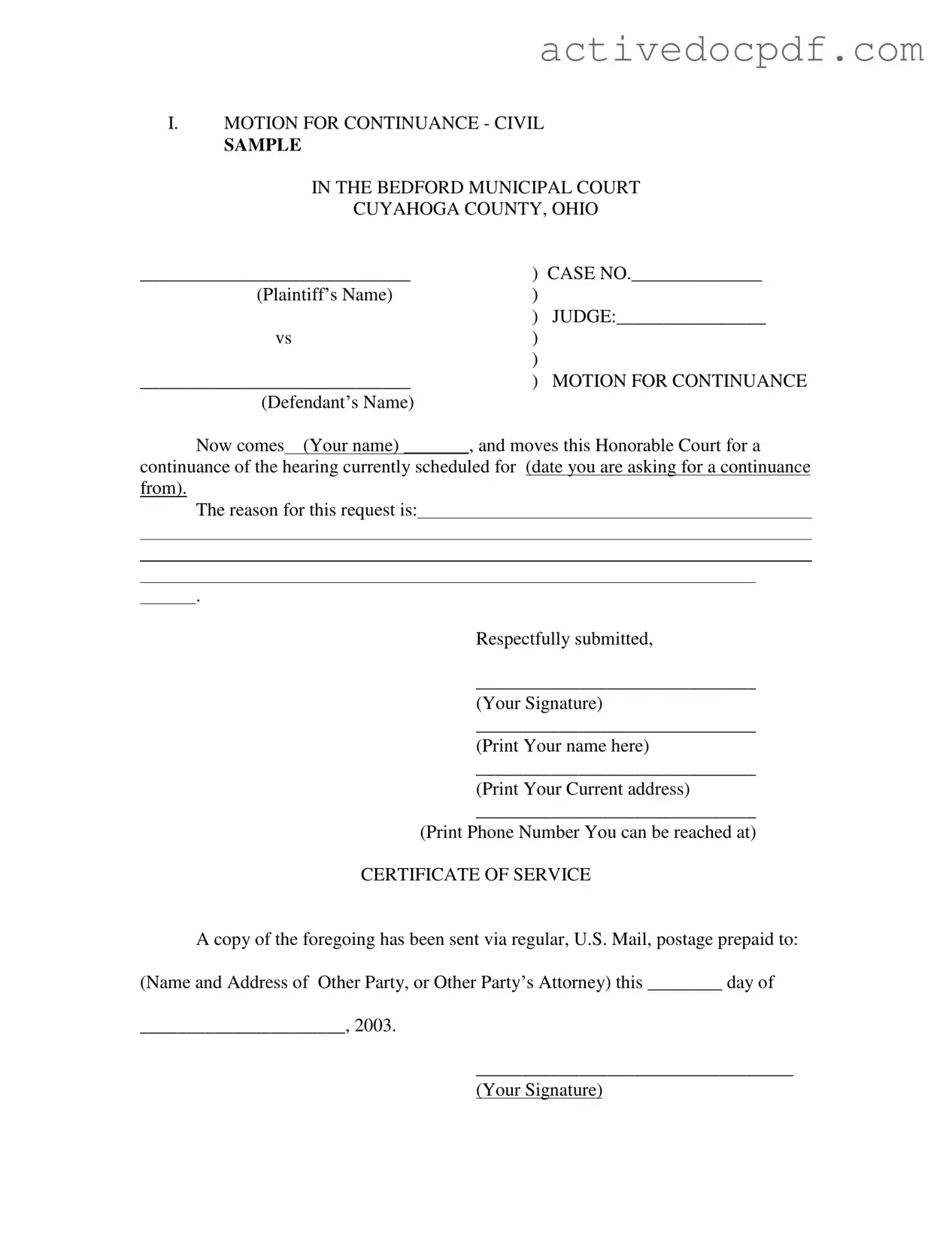What is a Motion for Continuance?
A Motion for Continuance is a formal request to postpone a scheduled court hearing. This request can be made by either party involved in a case. The motion must clearly state the reason for the request and provide the new date you are proposing for the hearing.
When should I file a Motion for Continuance?
You should file a Motion for Continuance as soon as you realize that you cannot attend the scheduled hearing. Common reasons for requesting a continuance include:
-
Medical emergencies
-
Scheduling conflicts
-
Need for additional time to gather evidence or prepare
It is best to file the motion well in advance of the hearing date to give the court and the opposing party enough time to respond.
To complete the form, follow these steps:
-
Fill in your name and the case number at the top of the form.
-
Specify the date of the hearing you are requesting to postpone.
-
Clearly explain the reason for your request.
-
Sign the form and print your name, current address, and phone number.
-
Include a Certificate of Service, which shows that you have sent a copy of the motion to the other party or their attorney.
What happens after I file the Motion for Continuance?
After filing the motion, the court will review your request. The judge may grant or deny the motion. If granted, the court will set a new date for the hearing. If denied, you are still required to attend the original hearing date.
Is there a fee associated with filing a Motion for Continuance?
Typically, there is no fee specifically for filing a Motion for Continuance. However, it is essential to check with the local court rules, as some jurisdictions may have specific requirements or fees associated with filing motions.
What if the other party opposes my Motion for Continuance?
If the other party opposes your motion, they may file a response with the court. The judge will consider both sides before making a decision. It is crucial to present a valid reason for your request to improve your chances of obtaining the continuance.
